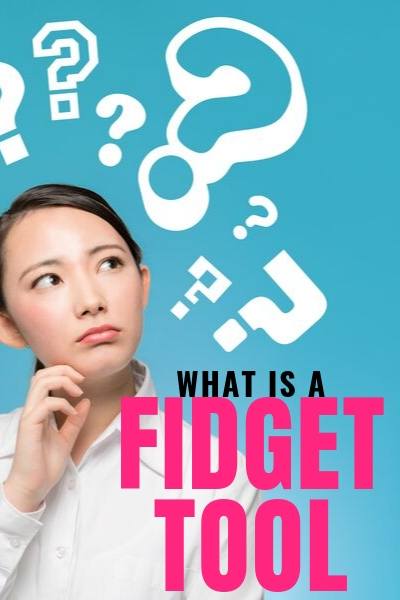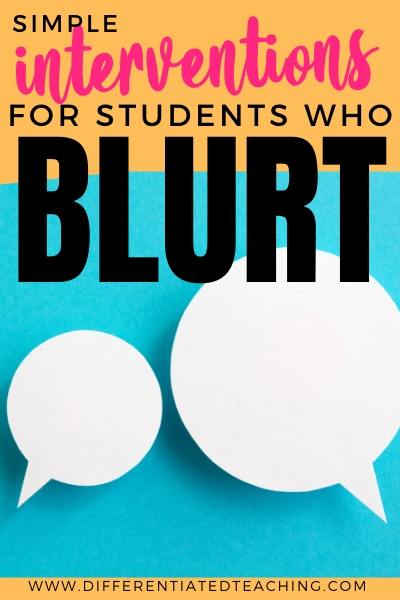Why you should use fidget tools to support classroom learning (& how to get started)
For many teachers, the word “fidget” brings flashbacks to those rough months in 2017 when fidget spinners were all the rage. This can make you reluctant to integrate this resource into your classroom…because let’s face it, none of us want to relive those days. However, when correctly introduced and utilized appropriately these tools can be a great way to support a number of classroom behavior challenges.
There is strong evidence to support their use for students who struggle with sensory integration, anxiety, and Attention Deficit Hyperactivity Disorder (ADHD). These small, easy-to-acquire tools can help students rebalance and get more from your academic learning time…but only if they’re used correctly.
In this article, you’ll learn more about the research supporting the use of fidget tools and how to create rules and routines to help students use them appropriately.

This article contains affiliate links. While purchasing through these links won’t cost you extra, it will help me keep this website up and running. Thanks in advance for your support.
What you need to know to get started with sensory tools in your classroom
If you aren’t familiar with this tool, I’ll share some background information to help you better understand what these tools really are and why they are beneficial for students with a variety of challenges.
However, if you’re already a pro and just looking to learn more, feel free to skip this section and hop on to how to implement them more efficiently.
What is a fidget tool?
Fidget tools, sometimes referred to as sensory tools or fidget toys, are designed to help with self-regulation. Fidgets come in a variety of formats and have been shown to help students focus, relax, and maintain attention to instruction.
Stress balls and fidget spinners are two of the most well-known examples, but a plethora of different types of tools are available. This makes it much easier to find exactly the right tool to meet your student’s needs.
Many of these tools can be purchased inexpensively on Amazon or a local store. However, you can also easily create your own, like these sensory bottles.

Who can benefit from sensory tools?
Many teachers are hesitant to implement sensory toolkits into their classroom because they worry these items will become a toy or plaything.
However, these same teachers may be able to easily identify students who are constantly moving – up from their desk to sharpen pencils, get drinks, or use the bathroom repeatedly throughout the day. These students often struggle to finish work or sit and attend to their lessons. As a result, they often develop knowledge and skill gaps across their years in elementary school.

Other students have clear sensory needs that can be addressed with fidget tools. The student who is constantly chewing his shirt or picking at her scabs may benefit from having an alternative way to get the sensory stimulation he or she needs. This makes them an easy way to provide this input without interrupting instruction.
Finally, students who are anxious or struggle to calm when upset can also benefit from having fidgets available in their classroom. These can be kept in a cool-down corner, where students can go when they are feeling overwhelmed or upset.
Sensory tools can also be a great addition to a classroom cool down spot because they can help students regroup and give a short break away from a frustrating task or situation.
How does fidgeting help with anxiety and ADHD?

Research supports the use of fidgets. A study by Stalvey and Brasell (2006) found that students’ academic growth was accelerated when stress balls were used in the classroom and that these effects were compounded for students with ADHD. This aligns with the strong research base supporting that when students identified as having ADHD move they increase their accuracy and have better recall on tasks that require memory.
Fidget tools have also been shown to help people with anxiety because of the soothing quality of repetitive movements. Stress balls have been shown to help relax tense muscles, and while they are not considered a long-term solution, fidget tools can be a great way to help release in the moment tension and help students self-regulate.
For students who have sensory processing issues, fidgets can offer them a way to get a high level of sensory input they need to do their best. A sensory diet is often recommended for these students and offering fidgets can help support that recommendation.
Tactile fidget tools, which stimulate the sense of touch, have also been found to be an effective tool for helping calm students who struggle with self-control and calming.
How to get started with these tools in your classroom
The first step to successfully implementing the use of fidgets in your classroom is to identify tools you feel comfortable having in your classroom. For example, some schools do not allow slime or playdough in classrooms due to carpeting. This would be something you’d want to make sure to know prior to getting started.
Creating rules and teaching students how to use fidget tools is the most important part of the process.
It is important to start by teaching that these are learning tools rather than toys and to reiterate this regularly, just as you would with any classroom procedure.
Be sure you start by setting up and teaching your rules and consequences. Students should understand that if they do not follow the rules and use these tools appropriately, they can lose the privilege. Below I’ve shared some rules that have worked well in my classroom.

Sample rules:
- Fidget tools must be held appropriately. They should not be tossed around or make noise.
- Fidget tools should be used quietly to prevent distracting peers
- When not being used, fidgets must be put in their designated area.
- Fidget tools should not interfere with your ability to learn or complete tasks.
Regardless of what rules you select, you should explicitly teach these rules to students and consider a one-on-one or small group lesson for students who will be using the tools regularly. You’ll also need to be consistent in your implementation of these rules to keep the focus on fidgets as a learning tool rather than a toy.
Handling classroom questions
If you’ve determined only certain students will have access to these tools and you feel like there might be questions from peers, you can do a whole class lesson to discuss that different students need different things to be successful academically.
One way to do this is to explain that while some students may need glasses to see the board or a special pencil to write, some students need fidgets to help them attend. Most students will be able to understand this analogy and will be able to overcome any feelings of injustice.
What are the best fidget tools?
While each child may respond differently depending on the tool provided, I wanted to give you a big-picture look at the many possibilities available. Here are some of my favorite fidget tools for the classroom. I’ve split them into four categories to allow you to quickly identify options that might be a good fit in your classroom or with a specific student.

The Best Fidget Tools For Every Student Needs
Feet – Gross Motor
Oral Motor
Hand (Non-Messy)
Hand (Possibly Messy)
- Putty (with or without pony beads added)
- Kneadable Erasers (available in scented and unscented)
- Playdough
- Slime or Foam
- Water Beads






